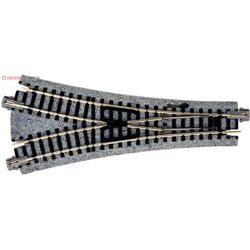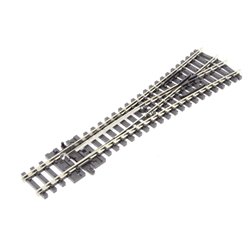Kadee couplings are a popular choice for railway modellers, particularly those modelling in HO and OO gauge....
No products
Product successfully added to your shopping cart
There are 0 items in your cart. There is 1 item in your cart.
Search Tips
Where would I typically use a Y-shaped turnout on my layout ?
A Y-shaped turnout, also known as a wye turnout, is a type of track configuration that allows a train to diverge onto different tracks. It gets its name from its resemblance to the letter "Y". This type of turnout can be useful in various situations on a layout.
One common use of a Y-shaped turnout is for creating a junction or a branch line. For example, if a layout has a mainline track and the modeller wishes to add a secondary line that branches off in a different direction, a Y-shaped turnout can be used. This allows trains to switch between the mainline and the branch line, offering more flexibility in the layout design.
Another use of a Y-shaped turnout is for creating a reversing loop. A reversing loop is a section of track that allows a train to change direction without having to physically turn around. By incorporating a Y-shaped turnout into a reversing loop, it is possible to create a continuous loop of track where trains can travel in both directions.
Additionally, a Y-shaped turnout can be used to create a siding or a storage track. Siding tracks are used for parking or storing trains temporarily, allowing other trains to pass by on the mainline. By using a Y-shaped turnout, a modeller can connect a siding track to the mainline, providing a convenient location for train storage or switching operations.
It's important to note that the specific placement of a Y-shaped turnout on a layout will depend on the layout design and the operational requirements the modeller has in mind. Factors such as the available space, desired train movements and the overall flow of the track plan will dictate where a Y-shaped turnout could be used.
Click here to receive the tips weekly in your mailbox. You can unsubscribe at any time.



.jpg)






